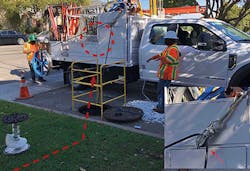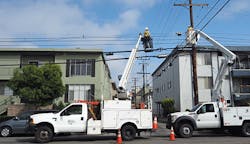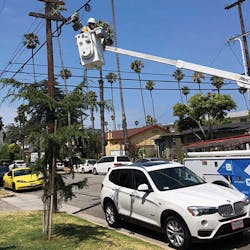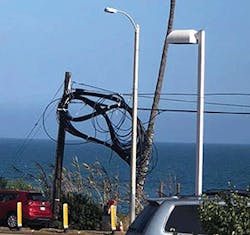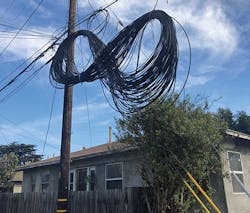Fiber Optics Has A Workforce Training Problem
Santa Monica was one of the first cities to invest in its own fiber network and today there are cables running down the streets with 100Gb/s circuits. The city connects all its services, as well as most traffic signals, surveillance cameras, and public WiFi, on its own fiber. It also leases fiber to commercial customers, many in the movie and tech industries.
Last year, there were installation crews everywhere installing new fiber, much of the work involving cabling for small cells. The city had set aside over 600 potential sites for small cells and issued more than 130 permits.
Almost every day on my walks around my Santa Monica neighborhood, I would see crews doing underground and aerial installations. Whenever possible, I stopped, took photos, and talked to the crews.
Most were subcontractors. The workers often did not know who the network owner was, they knew only the company they were contracted to for the project. Of these, the ones I was able to talk to universally said they learned fiber optics by OJT — On The Job training. The only hands-on training they typically received was on specific pieces of equipment by the manufacturers, fusion splicers being the one usually mentioned.
In watching these installers, I saw much work being done that was good quality but also much that was unacceptable. Crews with bucket trucks moving down the driving lane of a street lashing cables over the top of parked cars. Some messengers they were working on already had as many as 10 cables lashed to them; many of those were held with cable ties. For months, storage loops containing hundreds of meters of cables hung on already loaded messenger wires.
One day, a crew was pulling a high-fiber-count cable underground through a 5-inch diameter pulley when the minimum bend radius of the cable was 20 inches. This action likely was ruining the cable. The piles of cables in manholes and handholes I saw on this job site were amazing!
Santa Monica is not unique in the way it handles fiber builds. I’ve seen similar situations around the US myself and heard stories that go from bad to worse. Network owners have shared that their cables were cut by underground installation crews who were actually landscape contractors. A different landscape contractor sent photos of a fiber optic cable his workers had found laying on the ground in a park. It was not buried; instead, it had been covered by overgrown high grass. How did that landscaper discover the cable? They accidentally mowed over it and destroyed it. And yes, they were blamed for the damage.
"Installers"?
I can’t help but wonder who hired these people. Did they have resumes showing relevant experience? How about training and certification? Did the network owner have any clauses in the contract about the qualifications of workers, be they direct employees or subcontractors?
I’ve heard that the problem is that fewer companies are willing to provide training for employees. Yes, training can be expensive, but the damage untrained workers can do is substantial. That crew pulling the fiber optic cable over a too-small pulley probably caused more than $20,000 worth of damage in just a few minutes. A few days of simple training, or 30 minutes spent on an online course, could have prevented that expensive mistake.
I suspect these contractors were hired because they were the lowest bidder. It’s akin to the famous quote attributed to several astronauts about "…sitting on a rocket with a million parts all built by the lowest bidder."
This situation must change.
So, what should you, as a network owner, look for when you hire subcontractors, who may hire other subcontractors?
WHAT TO LOOK FOR:
1. Experience
2. References
3. Employee Training
4. Employee Certification by a recognized certifying body like FOA
5. Certification by manufacturer(s) for installing their products
What should you then require of contracted team members — even though they are NOT your employees? And how in the heck do you make that happen?
HOW TO MAKE THAT HAPPEN:
Exactly the same thing! (See the 5 points listed in "What To Look For".)
And here is where the system often breaks down.
Our industry must rally together about how the importance of fiber training is for those aligned with our industry. Now that most everyone is more comfortable with online learning, there’s an alternative for those too busy (or cheap) to attend in-person classes. Even if telecom providers have no training budget, there is every reason to take advantage of online fiber learning. One option for learning is through Fiber U (https://fiberu.org). There are many free, online self-study programs available.
As leaders in our industry, we must also try to educate manufacturers, contractors, and network owners and managers, about problems caused by incompetent subcontractors. Consider collaborating with an organization like ours to help establish Work to Cert and OJT programs in order to establish competency across the industry at large.
For more information, email [email protected], visit https://foa.org/ and follow us on LinkedIn.





